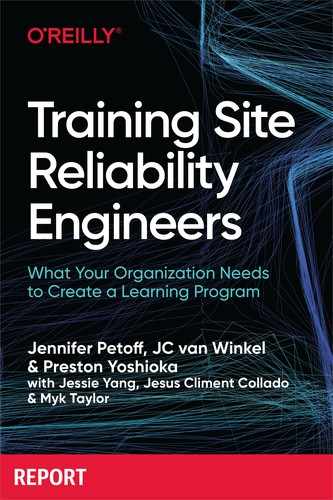0%
12Chapters
0-1Hours read
0kTotal Words
Book Description
Learn how to train site reliability engineers at your organization in both general and domain-specific subject matter. With this detailed guide from Google’s SRE team, you’ll not only learn a set of training best practices Google uses for ramping up new SREs; you’ll also explore use cases from smaller organizations that have successfully trained people for SRE (or SRE-like) functions.
To be effective, your company should purposefully design SRE training to fit both your company’s needs and your audience. While much of this report focuses on the specific experience of Google SRE, it explains the theory behind training design and presents best practices and lessons learned throughout the industry over the past several years.
- Explore several SRE training use cases, complete with optimal approaches and trade-offs
- Build training materials, experiences, and activities to onboard SREs and provide continuous education
- Dive into case studies that demonstrate SRE training in practice at both large and small organizations
- Use instructional design principles to develop the most effective learning solutions whether you’re training brand-new SREs or experienced engineers
- Learn how to apply SRE principles to run an SRE training program consistently and reliably
Table of Contents
- Preface
- 1. Identifying Your SRE Training Needs
- 2. Use Cases
- 3. Case Studies
- 4. Instructional Design Principles
- 5. How to “SRE” an SRE Training Program
- 6. Summary and Conclusions
- A. Example Training Design Document
